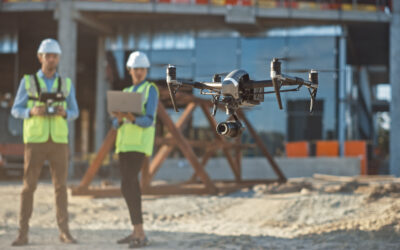In the UK, the construction industry acknowledges the critical significance of safety and training, particularly when it comes to construction hoist hire. The Construction Plant-hire Association (CPA) leads with its Best Practice Guide, which includes comprehensive protocols for the safe operation and meticulous inspection of building hoists  and goods hoist, ensuring that personnel are safeguarded during high-altitude tasks.[1]Furthermore, health and safety legislation enforces stringent compliance with secure work systems, assigning responsibility to the Principal Contractor to carefully orchestrate work at height and organize rescue procedures.[2].
and goods hoist, ensuring that personnel are safeguarded during high-altitude tasks.[1]Furthermore, health and safety legislation enforces stringent compliance with secure work systems, assigning responsibility to the Principal Contractor to carefully orchestrate work at height and organize rescue procedures.[2].
The CPA’s documentation serves as an authoritative resource, insisting on the essentiality of skill and training for hoist installers and operators, thereby solidifying the UK’s pledge to uphold safety in construction ventures that involve the use of construction hoist hire services.[1][2]The foundation of exacting standards, coupled with the observance of health and safety laws, exemplifies the sector’s commitment to protecting its workforce. This commitment extends to enhancing the performance and dependability of goods hoist, all within the scope of the British Standards Institution (BSI) recommendations.[1][2].
UNDERSTANDING THE BRITISH STANDARDS INSTITUTION (BSI) GUIDELINES
The British Standards Institution (BSI) is instrumental in establishing benchmarks for safety and performance in the UK’s construction sector, especially regarding the use of construction hoists. This segment explores the BSI’s directives and standards, underscoring their role in guaranteeing the safe employment of building hoist.
- BSI Guidelines on Construction Hoists:
-
- BS 7212:2016 This updated code of practice offers detailed advice and guidelines on the installation, upkeep, examination, and operation of construction hoists, including measures for hoistway protection. It delineates the duties of all stakeholders, fostering a united approach to hoist service and safety.[5][6].
- Machinery Directive 2006/42/EC & EN Standards These standards delineate the safety protocols for machinery, such as hoists, with EN 811 detailing the specific requirements for material hoist and material hoists, ensuring compliance with safety regulations.safety requirements for construction EN ISO 3834-2 meticulously outlines the quality requirements for fusion welding of metallic industrial equipment, ensuring that machinery, including hoists, adheres to the highest safety and quality standards. These directives and standards are pivotal for hoist and access equipment used on construction sites, guaranteeing their reliability and safety.[4].
- Exclusions and Special Cases:
-
- The standard judiciously excludes certain equipment from its scope, such as rope-driven passenger/goods hoists and hoists with platforms lacking protective sides, to precisely target the machinery intended for regulation. This careful delineation ensures clarity in compliance, as vivid as a hoist picture, and prevents any ambiguity regarding the guidelines.[6].
- Compliance with LOLER:
-
- In the UK, safe work systems for construction hoists must comply with the Lifting Operations and Lifting Equipment Regulations (LOLER), reinforcing the commitment to safety in lifting operations. This regulation complements the demand for hoist hire services that prioritize safety on construction sites.[7].
Construction projects in the UK that rigorously follow these guidelines and standards can ensure the safe and efficient use of construction hoists. By doing so, they not only safeguard their workers but also boost productivity on site, which is a testament to the benefits of reliable hoist hire services.
KEY SAFETY CONCERNS ADDRESSED BY BS 7212
BS 7212:2016 provides a detailed framework for the safe operation of construction hoists, addressing key safety concerns. This framework is integral to hoist hire companies, focusing on several critical areas to ensure the safety and efficiency of their equipment.
- Fall Protection and Training:
-
- The standard emphasizes the importance of a hierarchy in fall protection measures, advocating for the avoidance of work at height wherever possible. It promotes the use of collective and personal measures for prevention and protection, which is crucial for personal hoist systems.[1].
- It is stipulated that all personnel involved with hoist operations, including erection, alteration, maintenance, and dismantling, must be trained in safe working techniques. This includes the correct use of personal fall protection systems, ensuring their competence is assessed, which is a core aspect of hoist hire services.[1].
- Equipment Inspection and Maintenance:
-
- Emphasizing the critical need for pre-use checks of personal fall protection gear, including equipment sourced from hoist hire services, and comprehensive inspections by a qualified individual at intervals not exceeding six months is essential for workplace safety.[1].
- It is specified that lifting operations, often involving hoist hire equipment, must be meticulously planned, supervised, and carried out by skilled professionals, ensuring all cranes and lifting accessories are robust, tested, and subject to regular inspections.[2].
- Operational Safety Measures:
-
- The introduction of new safety protocols, including the transportation of scaffolding and the use of transport platforms, as well as dual operating positions for goods hoists from hoist hire companies, gate interlocking, and hoistway protection, marks a significant advancement in construction safety.[5].
- The guidance highlights the critical importance of averting accidents, such as individuals being struck by moving parts or falling down the hoistway of rented hoists, ensuring that loose materials are securely transported in containers to prevent falls, and that loads are balanced on the platform.[2][7].
These guidelines, formulated with contributions from leading industry and regulatory authorities, strive to maintain high safety standards, ensuring the protection of construction personnel and the public during the installation and operation of hoist hire equipment.[5].
COMPETENCE AND TRAINING FOR HOIST INSTALLERS AND OPERATORS
The Construction Plant-hire Association (CPA) stresses the significance of competence and training for installers and operators of hired hoists, providing insights through its Best Practice Guide. This resource, crafted by industry experts in collaboration with the Health and Safety Executive, details safe operational procedures for construction hoists, underlining the importance of training in fall protection, equipment inspection, and maintenance.[1].
Training and Qualifications for Hoist Personnel:
- IPAF Construction Hoist TrainingTraining programs are available for novices and semi-experienced operators, encompassing regulations, hoist components, safety measures, and emergency procedures, with portable hoist hire equipment often being a focus. Successful participants are awarded an IPAF certificate and PAL card, which remain valid for five years.[10].
- Site Supervisor Safety Training Scheme (SSSTS) andNational Vocational Qualification (NVQ) Level 3 in Plant Installations – Hoists (Construction)Qualifications are essential for supervisors and personnel involved in hoist installation, such as those provided by furniture hoist hire services. These credentials confirm that individuals possess the necessary knowledge and skills for conducting safe hoist operations.[4].
- Hoist Manufacturer CertificatesSpecific training, like the Alimak Hek Scando Range Workshop Setup certificate, is offered by manufacturers to equip operators with an in-depth understanding of particular hoist models, including those used in London hoist applications.[4].
Employers’ Responsibilities:
- Adequate TrainingIt is crucial to ensure that all personnel, including supervisory and managerial staff, are well-trained in health and safety for the safe operation of work equipment, such as London hoist lift trucks, in accordance with the Rider-operated lift trucks ACOP.[12].
- Competence and SupervisionThe planning and supervision of lifting operations must be in the hands of trained and competent individuals. This is particularly important in London hoist operations, which involve crane operators and those directing lifting operations, to confirm that all lifting equipment is strong, tested, and inspected on a regular basis.[2][7].
The Construction Hoist Interest Group’s Good Practice Guide (GPG) enhances these training requirements by outlining maintenance, inspection, and examination processes. It underscores the competence of maintenance personnel and the critical nature of maintaining thorough records, which is a practice adopted by reputable hoist for hire companies.[13].
CONCLUSION
Throughout the discourse on implementing safe work systems with construction hoists in the UK, the vital role of comprehensive guidelines and stringent adherence to standards has been unmistakably underscored. Through frameworks established by the Construction Plant-hire Association (CPA) and the British Standards Institution (BSI), the industry is encouraged to hire a hoist that meets these rigorous standards.health and safetyLegislation steers the construction industry towards safeguarding personnel while optimizing the operational efficiency of construction hoists. This commitment to safety and productivity is reflected in the rigorous training and competence requirements for hoist installers and operators, ensuring that every aspect of hoist usage on construction sites is managed with utmost care.
The significance of these practices extends beyond mere regulatory compliance; it embodies an industry-wide ethos of prioritizing worker safety and optimizing construction efficiency. The implications of adhering to these guidelines resonate through the potential to significantly reduce workplace accidents and enhance project delivery outcomes. As the construction sector continues to evolve, the continuous emphasis on safety, training, and adherence to established standards will undoubtedly play a pivotal role in shaping a safer, more efficient construction environment in the UK. Additionally, the exploration of further research and development in safety technology and training methods promises to heighten this commitment to excellence in construction operations.
FAQS
What is the required minimum safety factor for lifting equipment in the UK?
The minimum safety factor for lifting equipment, as specified by the Machinery Directive for leaf chain, is 4:1. This means that the leaf chain should have the capacity to lift a weight four times greater than the maximum load it is expected to handle during its operational lifespan.
Can you list three or more essential safety guidelines for operating hoisting equipment?
Certainly. When using hoisting equipment, it is crucial to adhere to the following safety measures: Ensure that any passenger hoist is operated by trained personnel and that regular inspections are conducted to maintain the highest safety standards.
- Always inspect the equipment prior to use.
- Conduct regular inspections and maintenance.
- Keep your training current and relevant.
- Ensure the load’s weight is appropriate for the equipment’s capacity.
- Utilise reliable monitoring and overload protection systems.
What UK regulations govern the use of hoists in the workplace?
The use of lifting equipment, such as goods hoist and slings, by individuals at work is regulated by the Lifting Operations and Lifting Equipment Regulations (LOLER) in the UK.
What does the ISO 12480 standard specify for safe lifting and hoisting practices?
The ISO 12480 standard outlines essential practices for the safe operation of cranes. It includes guidelines for establishing safe work systems, management and planning, as well as the selection, erection, dismantling, operation, and maintenance of cranes. Additionally, it covers the qualifications for crane operators, slingers, and signallers. For those looking to ensure compliance and safety, hoist hire companies often provide equipment that meets these rigorous standards.
REFERENCES
[1] –https://www.cpa.uk.net/downloads/24/CPA-CHIG0901-WAH-on-Construction-Hoists-090601.pdf
[2] –https://www.hse.gov.uk/construction/safetytopics/lifting-operations.htm
[3] –https://knowledge.bsigroup.com/products/code-of-practice-for-the-safe-use-of-construction-hoists/tracked-changes
[4] –https://recohoist.co.uk/en/what-we-do/safety-quality/
[5] –https://www.bsigroup.com/en-IN/About-BSI/Media-Centre/press-releases/2016/april/Construction-hoist-standard-for-transporting-people-or-goods-is-revised/
[6] –https://www.en-standard.eu/bs-7212-2016-code-of-practice-for-the-safe-use-of-construction-hoists/
[7] –https://www.hse.gov.uk/work-equipment-machinery/planning-organising-lifting-operations.htm
[8] –https://www.cpa.uk.net/downloads/26/CPA-CHIG0401-Safeguarding-CPA%20CHIG%20Requirements-Landing-Gates-on-Goods-only-Hoists-Rev1-Amendment-1-120703.pdf
[9] –https://www.hoistmagazine.com/features/safety-first-311022-10132356/
[10] –https://www.autec.co.uk/construction_training/construction-hoist-training/
[11] –https://www.ipaf.org/en-gb/training-courses/hoist-operator
[12] –https://www.hse.gov.uk/work-equipment-machinery/training-competence.htm
[13] –https://www.cpa.uk.net/downloads/23/CPA_CHIG1101_Maintenance-TE-Hoists-Revsion-210501.pdf


0 Comments